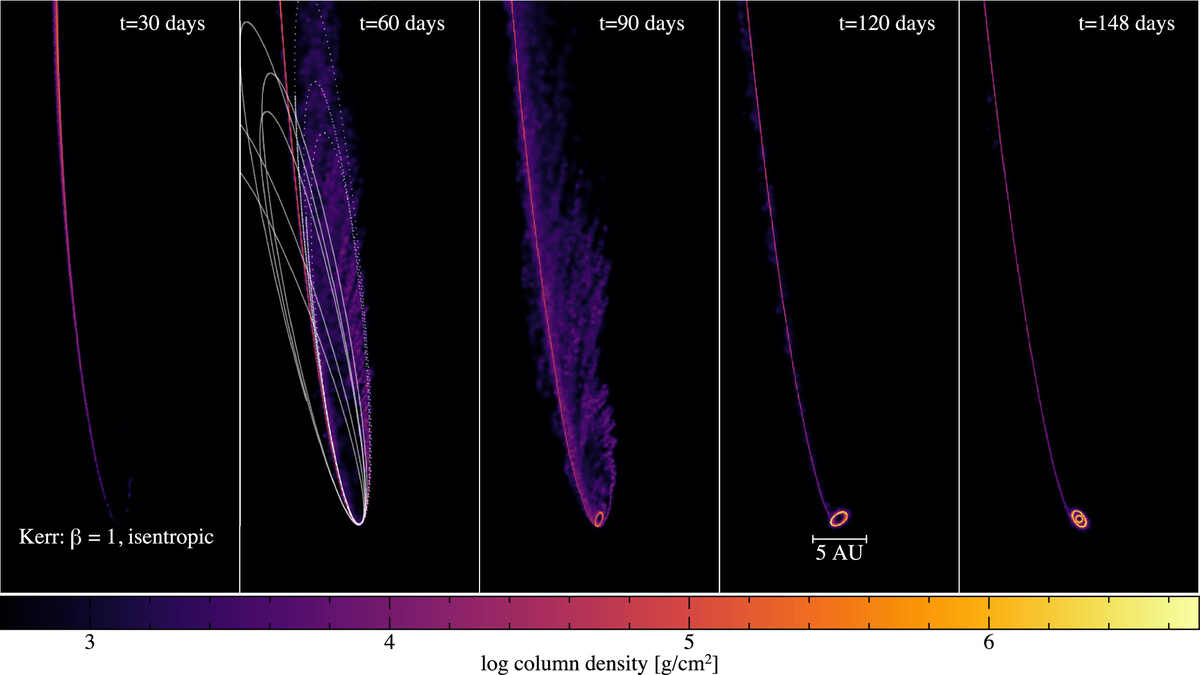THE LATEST
Supercomputer simulations illuminate tidal disruption events

Astrophysics recently achieved a significant milestone with groundbreaking supercomputer simulations that explain what happens to stars when they are torn apart by supermassive black holes. A research article published in The Astrophysical Journal Letters provides vital insights into these cataclysmic events.
The study, led by Daniel J. Price and his team, explores the complexities of simulating what happens after a star encounters a supermassive black hole. In the past, it has been challenging to capture the destruction of a star and the subsequent evolution of the returning debris due to the different timescales involved. Despite this, the researchers have successfully overcome these obstacles through a series of advanced simulations, revealing the formation of an expanding, lopsided bubble of material—an outflowing Eddington envelope extending hundreds of astronomical units.
An important aspect of the study is the unprecedented generation of an outflowing Eddington envelope within the simulations. This phenomenon was previously hypothesized but had never been realized in prior studies. This achievement holds promise for improving our understanding of optical and ultraviolet emissions in tidal disruption events, addressing longstanding differences between theoretical predictions and observational data.
The study's use of high-fidelity supercomputer simulations to capture the full range of processes involved in the tidal disruption of stars by supermassive black holes is noteworthy. The intricate interplay of gravitational forces, relativistic effects, and hydrodynamics has been carefully reproduced within these simulations, leading to a deeper understanding of these cosmic events.
Additionally, the researchers emphasize the critical role of these supercomputer simulations in addressing the limitations of existing models related to the optical emissions observed in tidal disruption events. By matching the observed light curves with low temperatures, faint luminosities, and specific line widths, the simulations provide a strong foundation for refining theoretical frameworks and deepening our understanding of these mysterious phenomena.
In a field where observations are often limited by the vast expanse of the cosmos and the unpredictability of celestial events, the use of advanced supercomputer simulations marks a transformative development. Through the intricate and high-fidelity models crafted in this study, astrophysicists now have the opportunity to gain profound insights into the dynamics of tidal disruption events, offering a glimpse into the underlying mechanisms that govern these awe-inspiring cosmic encounters.
The implications of these pioneering simulations extend beyond astrophysics, potentially impacting a range of scientific disciplines. The combination of theoretical frameworks and advanced computational capabilities has yielded a wealth of knowledge, promising to unlock some of the most profound mysteries of the universe.
As the research community continues to expand the boundaries of knowledge in astrophysics, the monumental progress made through supercomputer simulations offers a glimpse of the boundless potential of human ingenuity in unraveling the cosmic tapestry that surrounds us.
This groundbreaking research demonstrates the fusion of theoretical explanation and computational power, heralding a new era of discovery in astrophysics. The combination of visionary research and cutting-edge technology has ushered in a paradigm shift in our understanding of tidal disruption events, shedding light on the unexplored frontiers of the cosmos.
